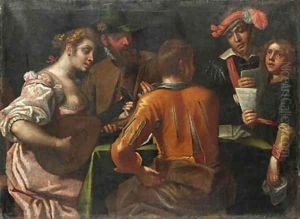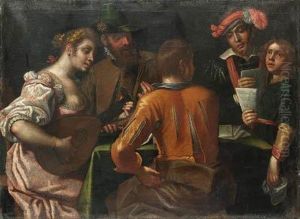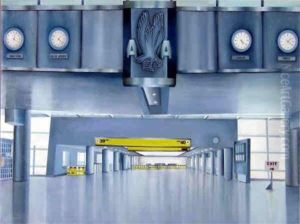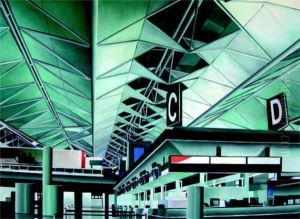Antonio Gandino Paintings
Antonio Gandino, born in Brescia in 1565, was an Italian painter of the late Renaissance period, contributing significantly to the artistic landscape of the 16th and early 17th centuries. His work, primarily rooted in the Mannerist tradition, reflects the transitional phase in European art between the High Renaissance and Baroque periods. Gandino's artistic journey was notably influenced by the prevailing styles of his time, yet he managed to infuse his creations with a distinct personal touch that highlighted his mastery over color and composition.
Gandino's early life was marked by an apprenticeship under Giovanni Battista Moroni, a prominent Bergamese painter known for his realistic portraiture. This foundational period was crucial in shaping Gandino's meticulous attention to detail and his nuanced approach to depicting human figures. Following his apprenticeship, Gandino's style evolved through exposure to the works of other Renaissance masters, including the dynamism of Tintoretto and the emotive expressions found in the works of Correggio and Parmigianino.
Throughout his career, Gandino undertook numerous commissions for religious institutions in and around Brescia, where he left a lasting legacy through frescoes, altarpieces, and other ecclesiastical works. His contribution to the decoration of the Santa Maria dei Miracoli in Brescia stands as a testament to his skill in creating complex, multi-figure compositions that are both harmonious and vibrant. Gandino's ability to convey deep spiritual themes through his art was particularly appreciated in an era that demanded visual narratives to complement religious doctrines.
Despite his considerable output and influence in his native city, Gandino's work was somewhat overshadowed by his contemporaries, leading to a period of relative obscurity after his death in 1630. However, modern scholarship has begun to reassess his contribution to Italian Renaissance art, recognizing him as a significant figure in the Brescian school. Gandino's legacy, characterized by a blend of technical proficiency and emotional depth, continues to be studied and appreciated for its unique place in the transition towards the Baroque aesthetic.
In summary, Antonio Gandino stands as a notable yet underappreciated master of the late Renaissance, whose works not only embody the stylistic shifts of his time but also contribute a distinct voice to the rich tapestry of Italian art history. His dedication to religious themes, combined with a refined technique, ensures his place among the notable artists of his generation, bridging the gap between the Renaissance and the emergence of the Baroque.



